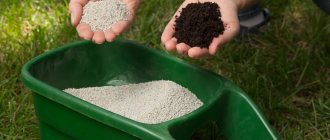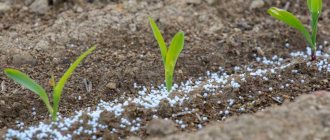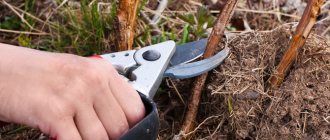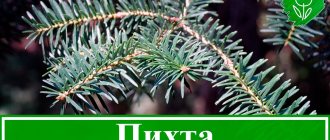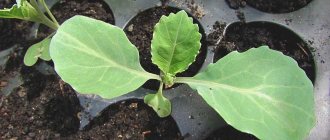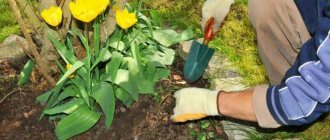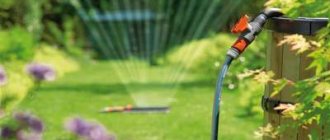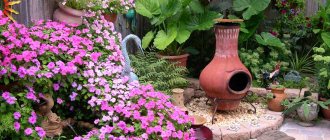After winter, the soil is depleted, and perennial shrubs and trees in the garden become weak and devoid of strength. The situation is aggravated by the spring melting of snow, when the melt water washes out nutrients from the ground. This is why it is so important to choose the right fertilizer for your garden in the spring.
We'll tell you what fertilizers are and how they differ from each other. We will provide information on the types of fertilizers that garden and vegetable crops need at the beginning of the season.
Main groups of fertilizers
All fertilizers can be grouped into two categories: organic and mineral. Each has its own characteristics, and therefore we will tell you about them in a little more detail.
Organic fertilizers include compositions based on plant raw materials. It can be:
- manure - cow, goat, horse, rabbit;
- bird droppings, chicken droppings are most often used;
- humus is a product of rotting manure with the addition of green matter;
- compost is a product of rotting or fermentation of plant residues and table waste;
- Vermicompost or vermicompost are products of the processing of organic matter by bacteria and worms.
Organic fertilizers also include peat, herbal infusions, wood and plant ash. Some of these products (manure, bird droppings) contain a lot of nitrogen, so they are used in the spring to stimulate the growth of green mass.
Mineral fertilizers include substances obtained synthetically. They can be simple, consisting of one active element (nitrogen, phosphorus, potassium, boron, magnesium, etc.) or complex, containing several components. The first group of fertilizers includes urea, the second - nitroammophoska.
Fertilizers are chosen based on the purpose and type of plant. For example, in late spring, phosphorus and potassium are important for strawberries, but nitrogen can reduce yield.
Potassium sulfate
Fertilizing the soil in the fall is of particular importance. Calcium sulfate is an additive that is used in combination with phosphorus and nitrogen fertilizers. This preparation is often used to fertilize the soil around gooseberry, currant and raspberry bushes. In addition, the additive is suitable for feeding garden strawberries and strawberries.
Potassium sulfate, which was added to the soil in the fall, allows the shrubs to easily overwinter. At the same time, the survival rate of garden crops increases even during severe frosts. As for dosage, 1 m2 requires no more than 30 grams of fertilizer.
The role of spring feeding
In horticulture, floriculture and vegetable growing, fertilizers are used in the spring for different purposes, depending on the object:
- for seedlings and seedlings - stimulation of the development of the root system;
- for flowering plants and shrubs - to ensure better decorativeness of flowers;
- for fruit trees - to get more fruit buds, increase the yield and marketable properties of the fruit;
- on strawberries and bush berry fields - to increase yield and improve the taste of berries;
- for garden crops - increasing fruit yield, improving their keeping quality.
For all plants, spring fertilization helps increase resistance to pathogenic bacteria and adverse environmental conditions.
Fertilizers can ruin all plantings if you don’t know how to handle them.
How to use urea
So, what fertilizers should you apply in the fall for fruit trees, and which ones should you use for the beds? Urea is typically used in combination with phosphorus supplements. Of course, nitrogen fertilizer can be applied in the spring. However, there will be much less time for this. To fertilize the soil, superphosphate should be neutralized with limestone or chalk. In this case, it is necessary to observe proportions. For 1 kilogram of superphosphate, 100 grams of limestone or chalk are required. To one part of such a mixture it is worth adding two parts of urea. The mixture should be mixed and then applied to the soil. Per 1 m2, 120 to 150 grams of the finished composition are required.
As for fruit trees, urea in combination with manure should be used for feeding. In this case, the amount of urea should be less. For 1 m2, 40 to 50 grams will be enough. It is worth considering which tree the fertilizer will be applied to. For example, to feed an apple tree, 40 grams of superphosphate, 70 grams of urea and 5 buckets of animal organic matter are required.
What substances do plants need in spring?
There are three known substances that are most important for the normal development of plants - nitrogen (N), potassium (K) and phosphorus (P). They are given to plants in a set ratio, which depends on the type of crop, the stage of plant development and the time of year. Most plants, trees and shrubs focus on nitrogen in the spring. Phosphorus and potassium are also needed at this time of year, but in smaller quantities.
The most successful ratios are selected in ready-made complex mineral fertilizers. It is recommended to buy them for gardeners and gardeners who have little experience and do not adhere to the principles of organic farming.
Safe use of one-component mineral fertilizers in the garden is possible only if the dosage is strictly followed and the instructions are followed.
Principles of nitrogen application in spring
As soon as trees or plants awaken from hibernation, their need for nitrogen increases. This substance stimulates the growth and development of green mass. Under the influence of nitrogen, the leaves become larger, they acquire a rich green color, and participate better in photosynthesis. Nitrogen is involved in the formation of protein molecules, so its excess in the soil is as harmful as its deficiency.
To provide plantings with nitrogen you can use:
- urea;
- ammonium sulfate;
- ammonium nitrate.
When it comes to organic matter, adding manure in the form of water mixers has a good effect.
A lack of nitrogen can be suspected by one specific sign: the foliage begins to turn pale, often acquiring a light yellow tint. Fewer new shoots are formed on shrubs and trees, and there is a noticeable lag in the growth of the entire plant.
Excess nitrogen in the soil is also determined by the condition of the foliage. Starting from the lower tiers, it begins to turn brown, then curls into tubes and falls off. On fruit trees, the fruits drop prematurely.
The application of nitrogenous mineral fertilizers must be in strict accordance with the standards.
Principles for applying phosphorus in spring
Phosphorus has the greatest effect on the growth and function of the root system. Under the influence of this substance, carbon synthesis occurs in plants; therefore, following the development of the root system, the positive effect is manifested in an improvement in the taste of the fruit. High yields are also impossible without phosphorus; with its deficiency, varietal characteristics are not fully manifested.
Of the mineral phosphorus fertilizers, phosphorus is contained in superphosphate. With organic matter the situation is more complicated: compost contains little phosphorus. It can be improved by adding bone or phosphate meal. There is a lot of phosphorus in the husks of pumpkin seeds and corn tops.
Phosphorus deficiency can be suspected by the condition of the leaves - they acquire a slightly bluish color. Gradually, the leaves, starting from the lower ones, fall off, the plants lag behind in growth, and look sickly.
With an increased content of phosphorus in the soil, the foliage of plants becomes narrow, its ends become brown. The taste and quantity of fruits deteriorate. Subsequently, the foliage turns brown, curls and falls off.
In the spring, phosphorus concentrates are diluted in large quantities of water and applied to the plants in compliance with the consumption rate.
Principles of adding potassium in spring
Potassium is responsible for carbohydrate and protein metabolism in the plant, helps strengthen its immunity, and also increases the content of vitamin C in fruits. First of all, the addition of potassium affects the flowers, so it is often used in fertilizing for flowering plants. After applying potassium fertilizers, the flowers become brighter and their color is more saturated.
Mineral fertilizers with potassium:
- potassium nitrate;
- potassium chloride;
- kalimag.
Potassium chloride is not suitable for all plants. It is not advisable to use it for feeding potatoes, strawberries, grapes, cucumbers, tomatoes, pumpkins and all berry bushes.
An organic source of potassium can be ash. It successfully replenishes the plants' needs for potassium and phosphorus.
Potassium deficiency in the soil increases the level of ammonia in the soil. This leads to low plant resistance to fungal diseases and weakens them. On soils with insufficient potassium content, vegetable and garden crops have few leaves, and their color is darker. Along the edges of the leaf blade takes on a reddish tint. Some plants respond to potassium deficiency by rapidly forming stepchildren.
If there is a lot of potassium, interveinal chlorosis develops. This is a disease in which only the leaf blade itself turns yellow, while the veins remain green. Similar changes are typical for new leaves, while old ones wrinkle and fall off. The tips of the roots gradually die off, this is reflected in the external condition of the plants: they become stunted and may die.
Potassium fertilizers can be applied in the spring, but more often they are used for autumn feeding.
Organic Substitutions
A clear advantage of using these substances is the ability to grow an absolutely healthy and environmentally friendly crop. When it comes to the question of how to fertilize the soil in the spring if there is no manure, the best substitutes are the following.
Compost is the most inexpensive and easiest way to replace mullein, but it is quite labor-intensive and time-consuming. The basis of the compost pit is layers of organic plant residues (tops, garden herbs, foliage, sawdust, peat bog), processed under the influence of beneficial microorganisms for 9-12 months. Periodic mixing of the contents of the pit (3-5 times per season), as well as the use of special catalysts such as “Compostin”, etc., will help speed up the maturation of compost. Ready-made compost is used during spring plowing, at the rate of 0.5-1 bucket per square plot.
Vermicompost is a product of the processing of organic residues by Californian earthworms. The process goes twice as fast as in a compost pit, while only 1 kg of the finished substance easily replaces up to 10 kg of manure.
Peat - this substrate itself contains practically no useful components, but adding it to the soil mixture in the garden and garden changes the structure of the earth, increases the breathability of the soil and improves the ability to absorb moisture. Peat will be an ideal component for crops that prefer slightly acidic soils: many fruit and berry plants, tomatoes, etc. Peat is also an integral part of the compost heap.
Sapropel (river silt) - is formed as a result of the decomposition of algae and inhabitants of fresh water bodies. The substance, rich in organic matter, is well suited for cultivating the garden in the spring, especially on sandy soils and sandy loams, since it has moisture-retaining properties and does not change the environment.
Eggshells are rich in calcium, which is important for the proper development of all plants. It is thoroughly washed, dried and crushed into fine grains, scattered around the tree trunks of fruit trees or poured into shallow trenches along future plantings.
Green fertilizer is an aqueous infusion of herbs (nettle, clover, calendula, potato tops, etc.), which is kept warm for 8-10 days, and then, diluted to a concentration of 1 to 5, used as root dressing and leaf fertilizer.
Wood ash is a good alkalizing component, rich in potassium. It has a dual function, being both a fertilizer and an insecticide. Spray the area in dry form (150-200 g per hundred square meters) or introduce it in dissolved form (the same concentration per bucket of water). Cruciferous crops (all types of cabbage) and berry crops respond well to fertilizing with ash.
Green manure is a natural source of nitrogen. Useful herbs (lupine, peas, clover, alfalfa, etc.) are sown along the row spacing, and before flowering they are mowed and spread as mulch.
Rules for using fertilizers
There are general rules for using fertilizers that must be followed:
- Select the preparation taking into account the characteristics of the plant (many of them cannot tolerate chlorine or do not have a reduced need for nitrogen).
- Observe the dosage when preparing solutions and the fertilizer consumption rates.
- Work with gloves, do not smoke, do not take food or water while feeding
- It is better to apply mineral fertilizers after abundant watering. This will protect the plant roots from chemical burns.
- Make sure that nutrient solutions do not fall into open bodies of water.
Don't overfeed your plants; it's even worse for them than being nutrient deficient. At best, the plant will respond with a decrease in immunity, at worst, it will die.
Always read the instructions for mineral fertilizers carefully.
Nettle
A natural manure substitute can also be made from nettles. Most often, a fresh plant is used, but dry is also great. This fertilizer must be made in containers made of wood or plastic—metal containers cannot be used.
Chop the nettles and add warm water. Do not completely fill the container, because when the fermentation process begins, there will be more liquid. Stir the mixture every day. The fertilizer should acquire a dark and rich color. The disappearance of foam is an indicator that the natural fertilizer is ready.
What fertilizer is best to apply in spring?
Usually in the spring they use either organic matter or complex mineral fertilizer. The compositions are also combined with each other, for example, humus with superphosphate. This combination, as well as the use of complex preparations, gives an excellent result: the plant receives the necessary set of nutrients, as a result of which it develops better.
As for the choice of a specific fertilizer, a lot depends on the plant itself, the phase of its development, as well as the properties of the soil. If you take the matter seriously, it is better to first have the soil in your garden or garden tested to know what problems there are. Indirectly, a deficiency or excess of substances can be identified by the condition of the plants on the site; we have specifically given the most striking signs of problems for this purpose.
When is the best time to prepare the ground for planting?
It is recommended to loosen the soil for planting in the fall or spring. Once you've harvested your crops and the soil is tired after a long, hot summer, it's the perfect time to dig up the soil. It's autumn. In spring, the earth is just waking up, and after the snow has melted it will be easy to dig up. She gets hydrated. From this we can conclude that these two seasons are well suited for digging up the earth.
What garden pests and diseases are green manure plants effective against?
The group of plants under consideration will help cope with the following problems:
- Flax, phacelia and calendula fight the Colorado potato beetle.
- Wireworms do not like the aromas of sweet clover, other legumes, as well as buckwheat and mustard.
- To get rid of the nematode, lupine flowers, rye, sweet clover, marigolds, alfalfa, and mustard are sown.
- For root rot, phacelia, oats, mustard, radish, lupine and sweet clover will have a healing effect.
- If fungal infections appear on home crops, mustard, radish, phacelia or alfalfa will have an antiseptic effect.
- In the fight against late blight, legumes are combined with mustard.
- Viruses and pathogens are eliminated by phacelia, lupine, and mustard.
How to fertilize the soil in the spring if there is no manure?
If organic fertilizers are not available, use mineral fertilizers. Don't be afraid that your vegetables will have elevated nitrate levels. If you do not abuse it, but use the recommendations printed on the packaging, then nothing bad will happen. An increase in nitrates can also be obtained by using too much organic matter. If you are an ardent opponent of mineral fertilizers, then you can use turf soil during planting.
But this work is very labor-intensive. The essence of this method is that you need to dig out a layer of turf as deep as the bayonet of a shovel and beat the soil directly onto the garden bed (or into a prepared container) on the handle of the shovel, and then dig shallowly. Of course, you can’t plant a large area this way, but it’s quite possible to prepare a couple of beds. In the spring, you can bury last year’s grass and leaves directly into the garden bed (just not from city streets) - gradually rotting in the ground, they will provide the plants with some kind of nutrition, albeit incomplete. Ash should also be added there. The best substitute for manure will be compost, but the process of preparing full-fledged compost is very long - two or three seasons, and therefore, if you have problems with manure in the future, then take care of preparing it now.
Calcium chloride
A similar substance is used as fertilizer for potatoes. In autumn, the drug scatters across the fields. Calcium chloride is suitable for soil that will be used for spring planting of plants that do not tolerate chlorine. This substance is an unstable element. Six months after applying such fertilizer, the chlorine will partially erode or dissolve in melt water. At the same time, calcium will be well preserved in the soil. It is recommended to apply no more than 20 grams of this fertilizer per 1 m2.
It is not recommended to add microelements individually to the soil in the autumn, since only a small part of them will be preserved by spring. As a result, the substances will not be able to affect plant productivity.

